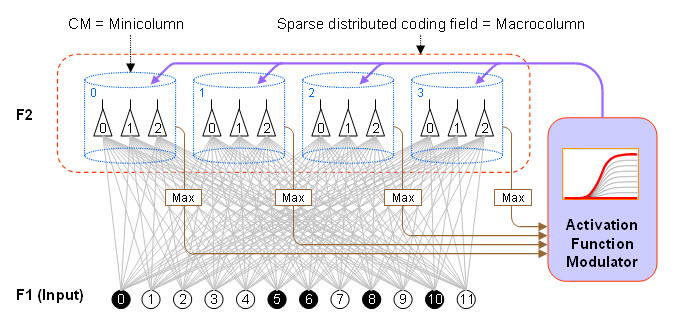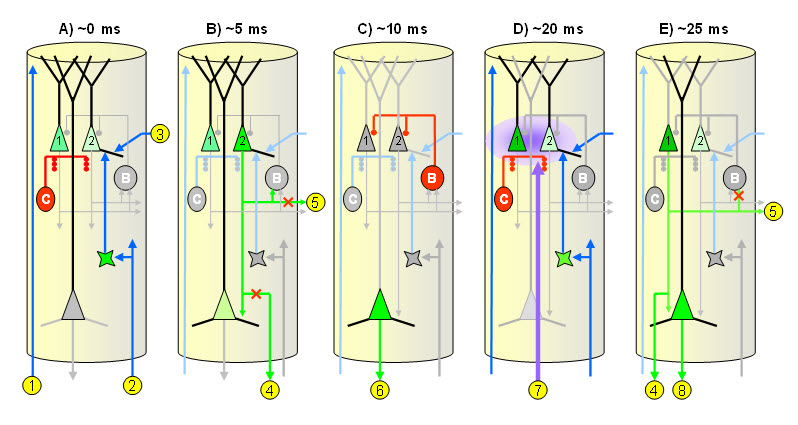Canonical Micro/Macro-Circuit of Neocortex

Figure 1: Functional Architecture. The input field (F1) consists of binary feature detectors: a particular input consisting of five active features is shown. The coding field, F2, is proposed as a macrocolumn analog. It consists of winner-take-all competitive modules (CMs) proposed as analogs of minicolumns. Each CM has K=3 binary units, proposed as analogs of L2/3 pyramidals). Bottom-up connectivity is all-to-all: gray lines signify initially zero weights. The familiarity (G) of the input is proposed to be computed via a subcortical, neuromodulator-based mechanism, which then modulates the F2 unit activation function parameters (e.g., sigmoid height) contingent on G (purple arrows). Also see this page for more detail about this G-based modulation of the activation funciton.

Figure 2: Hypothetical minicolumnar circuit. Panels A-E depict critical events transpiring in a single minicolumn at five points in time during the CSA’s computational cycle, which I propose corresponds to one gamma cycle: approximate timings relative to start of CSA cycle are shown across top. The units labeled “C” (“B”) represent the local chandelier (basket cell) populations, respectively. Numbers in yellow circles depict key events. For example, event 7 indicates a transient local pulse of neuromodulator (likely NE, ACh, or some combination) that is inversely proportional to G (familiarity). Thus, when G ~ 0, indicating high novelty, a strong neuromodulator pulse is delivered, which has the effect of making all competing pyramidals highly jittery (i.e., high noise), which ultimately results in a highly random choice of winners. At the other extreme, when G ~ 1, indicating high familarity, no/little neuromodulator is dilivered, making the competing pyramidals compete only on the bais of their synaptic inputs, which will reflect prior learning, and thus favor winners that also won in the prior similar instances. See paper for detailed explanation.
